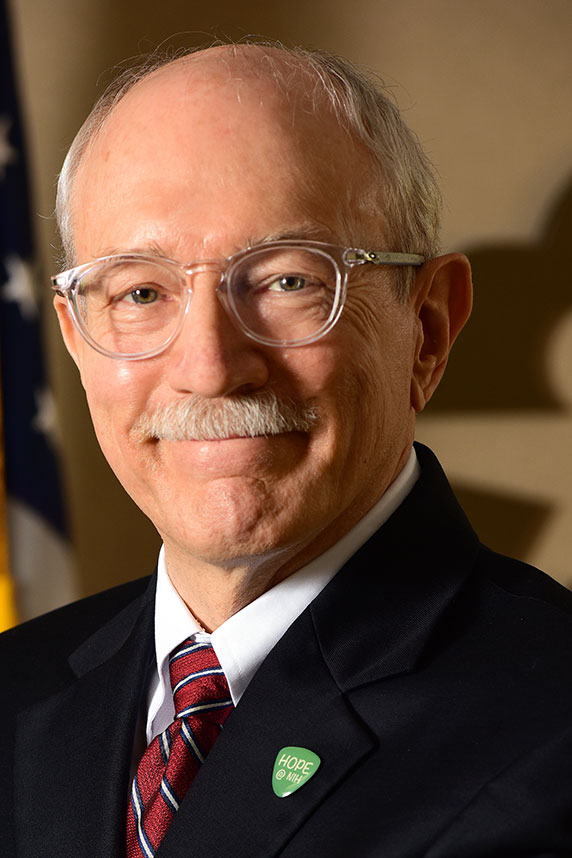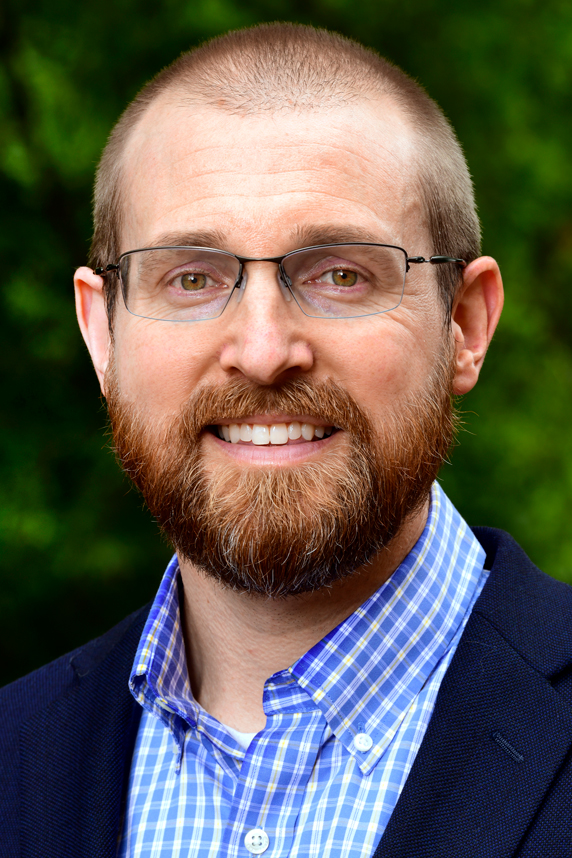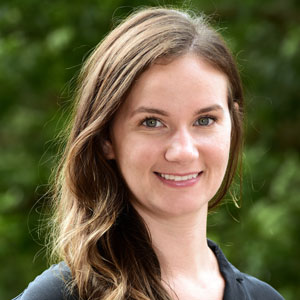Translational, predictive, and strategic were among the words used to describe the latest NIEHS initiatives during the 167th meeting of the National Advisory Environmental Health Sciences Council (NAEHSC), held Sept. 13-14. Other presentations highlighted efforts related to worker safety during disease outbreaks, per- and polyfluoroalkyl substances (PFAS), and data sharing.
A new name
 “We are embracing the emerging themes and the exciting concepts that are coming from the environmental health and biomedical communities,” said Woychik, referring to the strategic planning process. (Photo courtesy of Steve McCaw / NIEHS)
“We are embracing the emerging themes and the exciting concepts that are coming from the environmental health and biomedical communities,” said Woychik, referring to the strategic planning process. (Photo courtesy of Steve McCaw / NIEHS)The NIEHS Division of the National Toxicology Program is now known as the Division of Translational Toxicology (DTT), announced institute director Rick Woychik, Ph.D. The name change reflects the organization’s focus on promoting human-relevant research that leads to greater insight into how real-world exposures influence disease.
“The new name more clearly describes the division’s work,” said Woychik. “It demonstrates that the organization is addressing contemporary public health challenges and developing new approaches that increase our ability to predict human hazards. Ultimately, that will help to protect U.S. populations from the negative effects of environmental exposures.”
Read more about DTT in this article in the October Environmental Factor.
Being strategic
Efforts to develop the 2024-2028 NIEHS Strategic Plan are now underway, according to Sheila Newton, Ph.D., deputy director of scientific planning and evaluation in the new Office of Strategic Coordination, Planning, and Evaluation. She said the planning team will seek input from the environmental health sciences (EHS) community and NAEHSC members.
Woychik noted that the strategic planning process is almost as important as the plan itself, and he encouraged all to participate and provide input. He also presented five emerging research areas that the plan will likely include along with other priorities.
- Precision environmental health.
- Climate change and health.
- Predictive translational toxicology.
- Environmental justice and health disparities.
- Computational biology and data science.
The director’s report concluded with several scientific and staff updates as well as a discussion about the recent EHS Core Centers annual meeting, which was held in New York (see sidebar).
Dealing with data
 Duncan said molding a plan for harmonizing EHS language is a complex and challenging task. “Data standards are dynamic and living resources to which we expect to see updates, revisions, and extensions over time.” (Photo courtesy of Steve McCaw / NIEHS)
Duncan said molding a plan for harmonizing EHS language is a complex and challenging task. “Data standards are dynamic and living resources to which we expect to see updates, revisions, and extensions over time.” (Photo courtesy of Steve McCaw / NIEHS)National Institutes of Health (NIH) grantees will be required to submit a data management and sharing plan beginning Jan. 25, 2023. Harmonizing language used in EHS datasets will help in meeting these new requirements, according to Chris Duncan, Ph.D., from the NIEHS Genes, Environment, and Health Branch.
He presented a plan to advance community-driven standards development for EHS data and metadata. The sprawling NIEHS initiative, which originally began in 2013, builds upon last year’s launch of the Environmental Health Language Collaborative (learn more about the collaborative by reading this October 2021 Environmental Factor article).
Council members recognized the challenge ahead and recommended program clearance for the proposed consensus-based data standards efforts.
Superfund approvals
Also approved by Council was the continuation of a key funding mechanism for the NIEHS Superfund Research Program (SRP). The program supports centers across the nation that integrate biomedical research with environmental science and engineering. The goal is to provide solutions for safer and healthier environments.
SRP grantees have supported more than 2,500 trainees, published more than 11,000 research publications, and patented 200 inventions, according to Michelle Heacock, Ph.D., a health scientist administrator in the institute’s Hazardous Substances Research Branch.
The 35th annual SRP meeting will be held Dec. 14-16 in Raleigh, North Carolina.
Protecting workers during pandemic
Sharon Beard, director of the NIEHS Worker Training Program (WTP), presented ongoing efforts to provide biological safety training during infectious disease outbreaks.
WTP applied an all-hazards approach to the COVID-19 pandemic, which included evidence-based trainings developed from previous pathogen, bloodborne, and respiratory outbreaks. The program activated a network of trainers throughout the pandemic to educate workers both in person and virtually, according to Beard.
Advancing PFAS research
The second day of the Council meeting focused on federal, state, and local initiatives to identify PFAS and better understand their associated health effects. The substances are manufactured chemicals that can leach into soil, air, and water. As many as 9,000 such substances have been identified. Not all PFAS break down easily, and many can accumulate in the environment and body.
Council discussions centered on multiple exposures. Michigan State University bioethicist Kevin Elliot, Ph.D., presented on the social and ethical implications of identifying, classifying, regulating, and remediating PFAS exposures. Other PFAS presentations included guidance on PFAS testing and exposure, and designing a next-generation research strategy.
Results from the NIEHS-funded North Carolina GenX Exposure Study were presented by institute grantee Jane Hoppin, Sc.D., from North Carolina State University.
GenX is a chemical used in Teflon production and is a byproduct of fluorochemical manufacturing. In 2017, it was discovered that the substance had been released into the Cape Fear River, a major source of drinking water in southeastern North Carolina. Hoppin noted there was no evidence of GenX in the blood of study participants five months after exposure stopped, although other PFAS exposures were detected by the research team.
Council members wrapped up the meeting with a spirited discussion on the role of NIEHS and the EHS community in helping to educate clinicians on the environmental components of disease.
The next NAEHSC meeting will take place Feb. 21-22, 2023.
(Jennifer Harker, Ph.D., is a technical writer-editor in the NIEHS Office of Communications and Public Liaison.)









